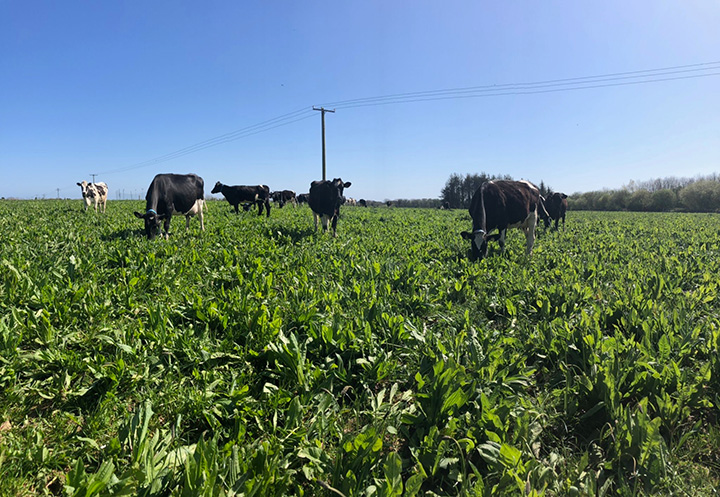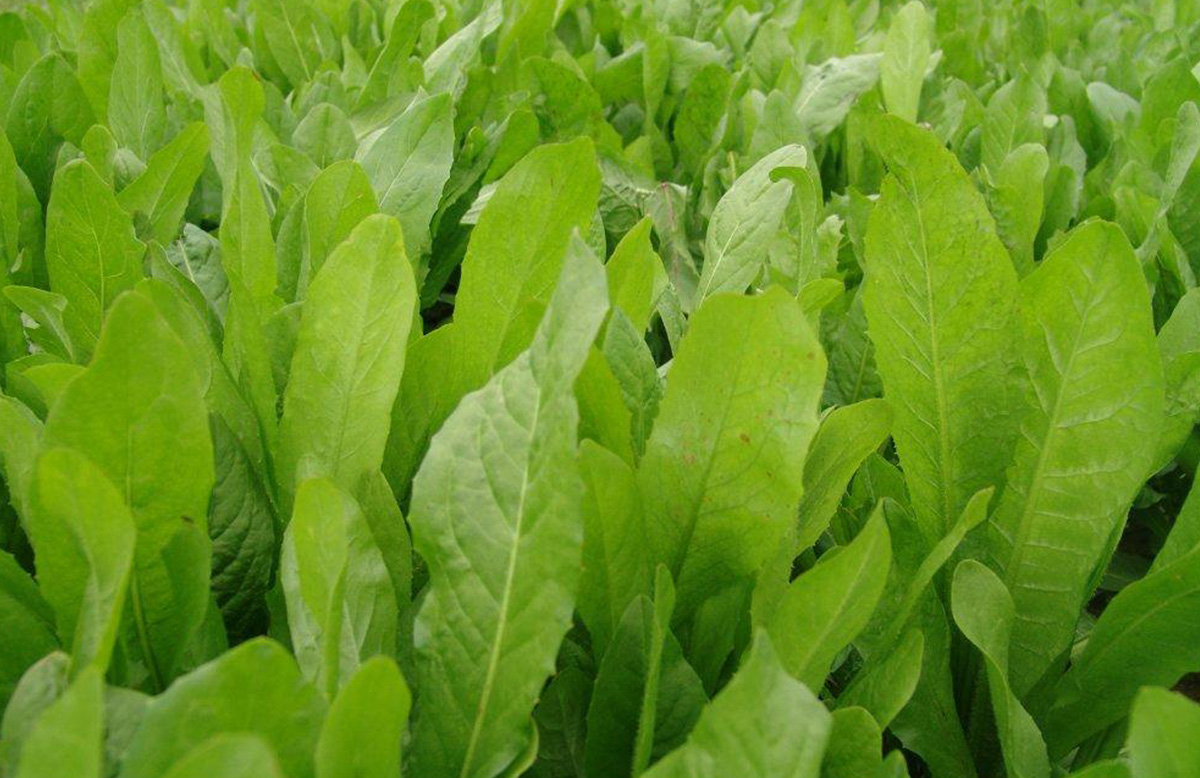Multi species swards continue to be a hot topic amongst dairy, beef and sheep producers but what is a multi species sward??
 The definition of multi-species, is a mixture made up of of two or more species. Perennial ryegrass and other grass varieties tend to make up the backbone of these mixtures along with legumes and herbs.
The definition of multi-species, is a mixture made up of of two or more species. Perennial ryegrass and other grass varieties tend to make up the backbone of these mixtures along with legumes and herbs.
Different species bring different benefits to the sward. Protein rich legumes such as white clover, red clover or sainfoin will be nitrogen fixing, while others such as Chicory will be deep rooting, and so, draw minerals from further down the soil profile. Plantain is also commonly added to multi species mixes – high levels of bypass protein and a natural diuretic effect make this highly suited for growing lambs or youngstock. Diuretics increase the volume of urine produced and so ‘dry’ up faeces produced by animals, this results in a cleaner back end on animals and can reduce instances of fly strike.
Trials have shown lambs can achieve up to 360 + grams/Daily liveweight gain (DLWG) on a mixture made up of high digestibility Perennial Ryegrass, White Clover, Chicory and Plantain. Some of this can be attributed to the inclusion of Chicory, a perennial herbaceous plant of the dandelion family Asteracea. Natural anthelminthics have for a long time been associated with this plant and more recently its natural growth pattern are thought to reduce gut worm count.
There are different options when sowing a multi species ley:
What is in a multi species mixture?
At Drummonds, we can tailor any of our standard mixtures or make a unique mixture to suit your system. As stated above, most multi species mixtures will be based around Perennial Ryegrass and White Clover. Herb content is normally made up of Chicory and Plantain and this is where most queries come from.
 Chicory: Chicory is a perennial herb that is often grown commercially as a leaf vegetable or salad green in Europe. Chicory was re-assessed as a potential forage crop in the mid-1970s in New Zealand. After ten years of breeding the world’s first forage variety of chicory became commercially available in 1985. A range of different varieties are now used worldwide. Chicory can be grown as a stand-alone crop or as part of a mixed sward. The benefit of growing chicory in a mixture is that its rapid growth in summer, drought tolerance and relatively high protein content, complement the shortfalls in the other species. In general, chicory does combine well with other grasses and clovers.
Chicory: Chicory is a perennial herb that is often grown commercially as a leaf vegetable or salad green in Europe. Chicory was re-assessed as a potential forage crop in the mid-1970s in New Zealand. After ten years of breeding the world’s first forage variety of chicory became commercially available in 1985. A range of different varieties are now used worldwide. Chicory can be grown as a stand-alone crop or as part of a mixed sward. The benefit of growing chicory in a mixture is that its rapid growth in summer, drought tolerance and relatively high protein content, complement the shortfalls in the other species. In general, chicory does combine well with other grasses and clovers.
Chicory is a herb and not a legume, so additional nitrogen is essential for growth. Clover is a good companion crop. Fertiliser applications need to be applied later than on grass, due to its growth pattern. Little and often generates the best response. Chicory leaves are very palatable to grazing livestock. However, the flowering stems that develop when the crop bolts are far less palatable and have a lower nutritive value than the leaves so good grazing management is key.
In terms of sowing, seed rates vary between depending on the companion species and target population although 0.8kg/acre is the standard for most multi species mixtures. Sowing in late spring is recommended, as growth is limited when soil temperature is less than 10°C. Chicory can be sown up to mid-August as part of a mixed sward depending on soil conditions but the challenge is to establish the Chicory within the multi species crop and graze it before soil temperatures fall below 8°C and winter dormancy occurs.
Plantain: Narrow-leaf plantain is a deep-rooted, smooth-leaved perennial herb. The forage varieties of plantain are more uniform and more erect, with a higher number of vegetative shoots compared to its more native counterparts found along ditches throughout the country.
Plantain is highly palatable and many studies have shown that in a mixed pasture animals will selectively graze it. Palatability does not deteriorate as seed heads emerge in Plantain and protein content is stable at 18 – 20% throughout the growing season.
Like Chicory, 0.8kg/acre of Plantain is the standard for most multi species mixtures. In other parts of the World like New Zealand Plantain is sown as a monoculture at 4-5kg/acre. In these cases, Plantain is used as a buffer crop for drought prone regions and is mostly used to feed growing animals. Use of Plantain in the Northern hemisphere is predominantly in multi species swards.
Research on multi species swards is ongoing, with a lot of emphasis on lamb finishing and youngstock grazing. However, Teagasc is investigating the role multi species swards may have in dairy grazing platforms in the future.
If you have any queries on multi species swards or reseeding please contact your Drummonds Technical Sales Advisor. We can tailor any of our premium Green Acres grass seed mixtures to suit your system.
Article written by Bill Reilly, Drummonds Technical Sales Advisor, 086 061 2901
